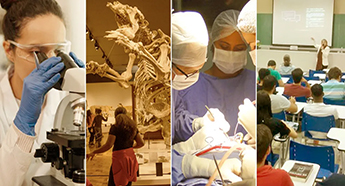Acontece nesta terça-feira, dia 3, a partir das 9 horas, no Auditório 2 do Centro de Tecnologia Educacional para Engenharia (CETEPE) da Escola de Engenharia de São Carlos (EESC) da USP, a palestra Active structural acoustic control for curved structures using PZT patches and sound quality approach, ministrada pelo professor do Departamento de Engenharia Mecânica da Isfahan University of Technology, Ali Loghmani.
O evento é promovido pelo Programa de Pós-Graduação em Engenharia Mecânica da EESC e é aberto ao público. O CETEPE localiza-se na área 1 do campus da USP em São Carlos, situada na Av. Trabalhador são-carlense, 400.

Resumo da palestra
Active structural acoustic control is an efficient approach to attenuate the radiated sound from a structure, as compared to active noise control (ANC) and active vibration control (AVC). Since in the ASAC approach, structural sensors and actuators are utilized, the smart structure becomes more compact than the one used in the AVC approach. Moreover, since not all the vibration modes should be suppressed to attenuate the radiated sound, lower control effort than that of the AVC approach can instead mitigate the noise.
This lecture intends to show how PZT patches, bonded to a curved structure (i.e. a cylindrical shell), can be used to that end. The lecture discusses on vibration and acoustic models of the smart structure along with the PZT effects, and different active controllers such as the LQG and the FxLMS are discussed. This lecture will also show experiments that confirm the models and numerical simulations for ASAC applications.
The second part of this lecture shows a low computational model for calculating sound quality metrics, able to operate in real time. Decreasing sound pressure level (SPL) is not always necessary when human perceives the sound. Because of the natural filters in our ears, the perceived sound is not only dependent on the SPL but also dependent on its frequency. Some sound quality metrics can evaluate the quality of the perceived sound. Artificial neural network and wavelet transform are then used to predict the sound quality metrics for non-stationary sounds.
Mais informações:
Professor Carlos De Marqui Junior
Departamento de Engenharia Aeronáutica da EESC
Tel.: (16) 3373-9417
E-mail: demarqui@sc.usp.br
Por Assessoria de Comunicação da EESC



